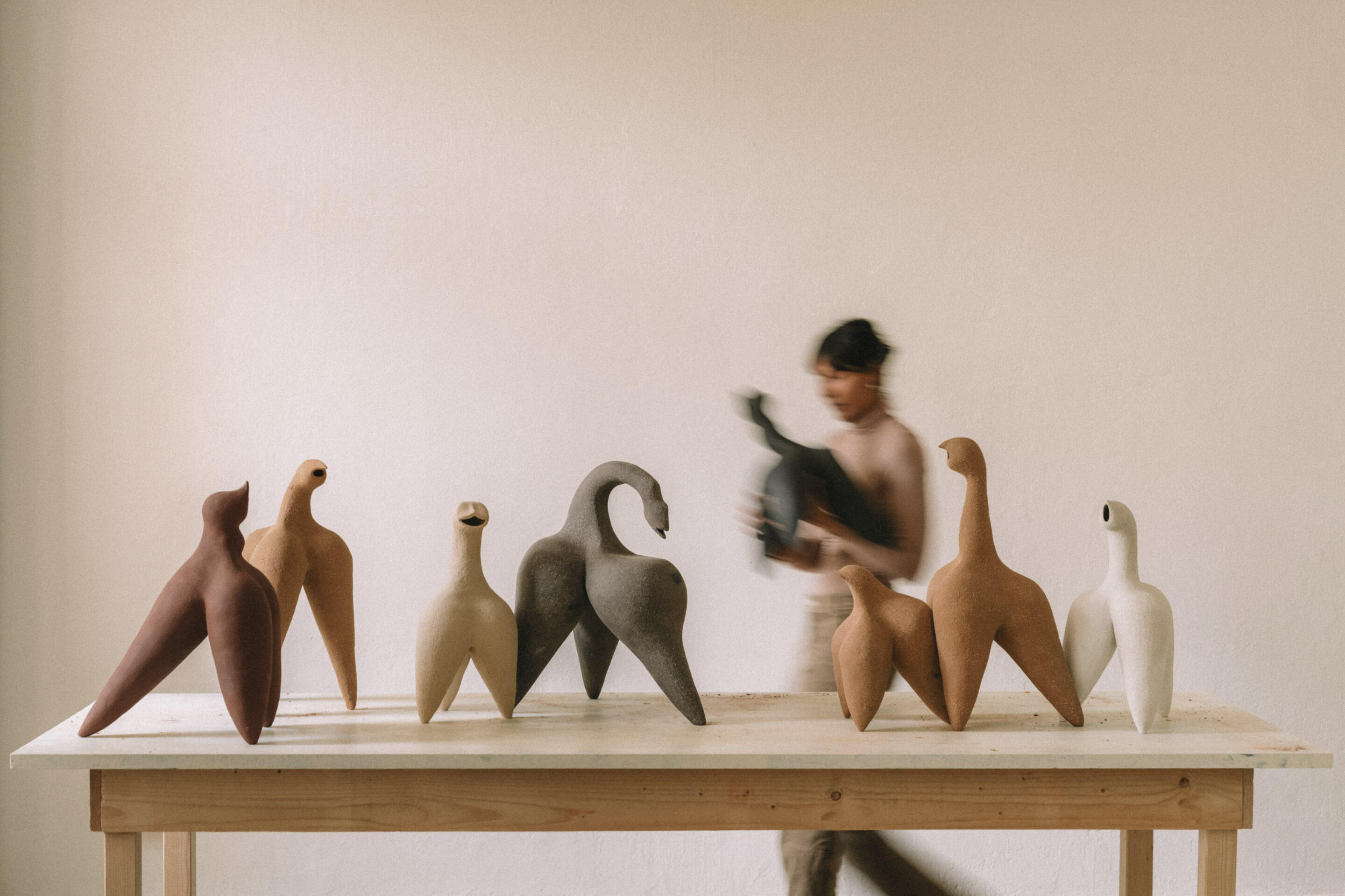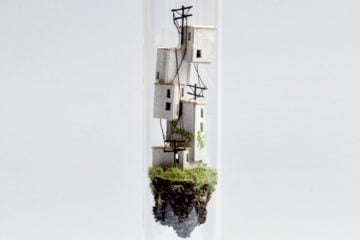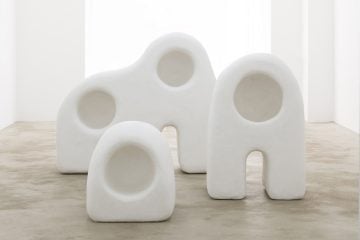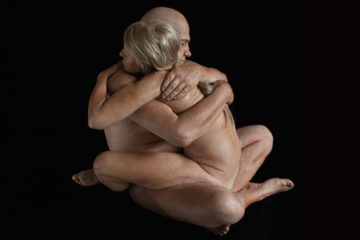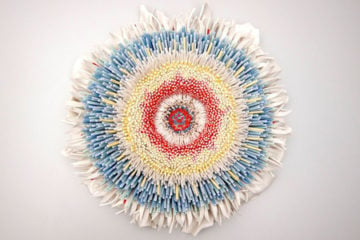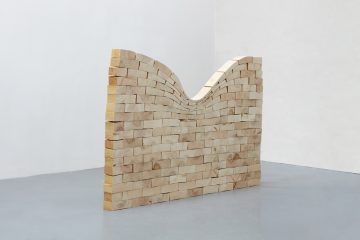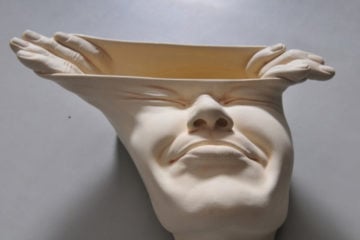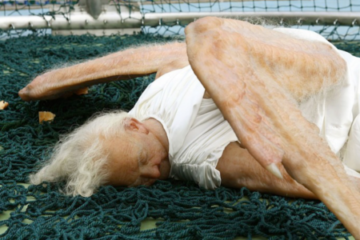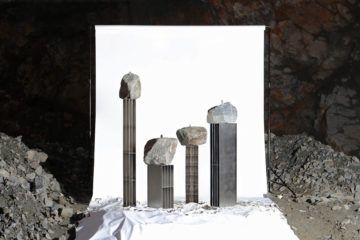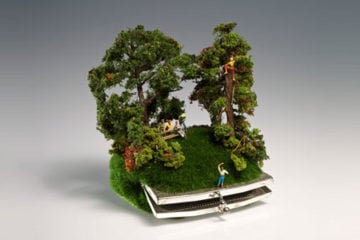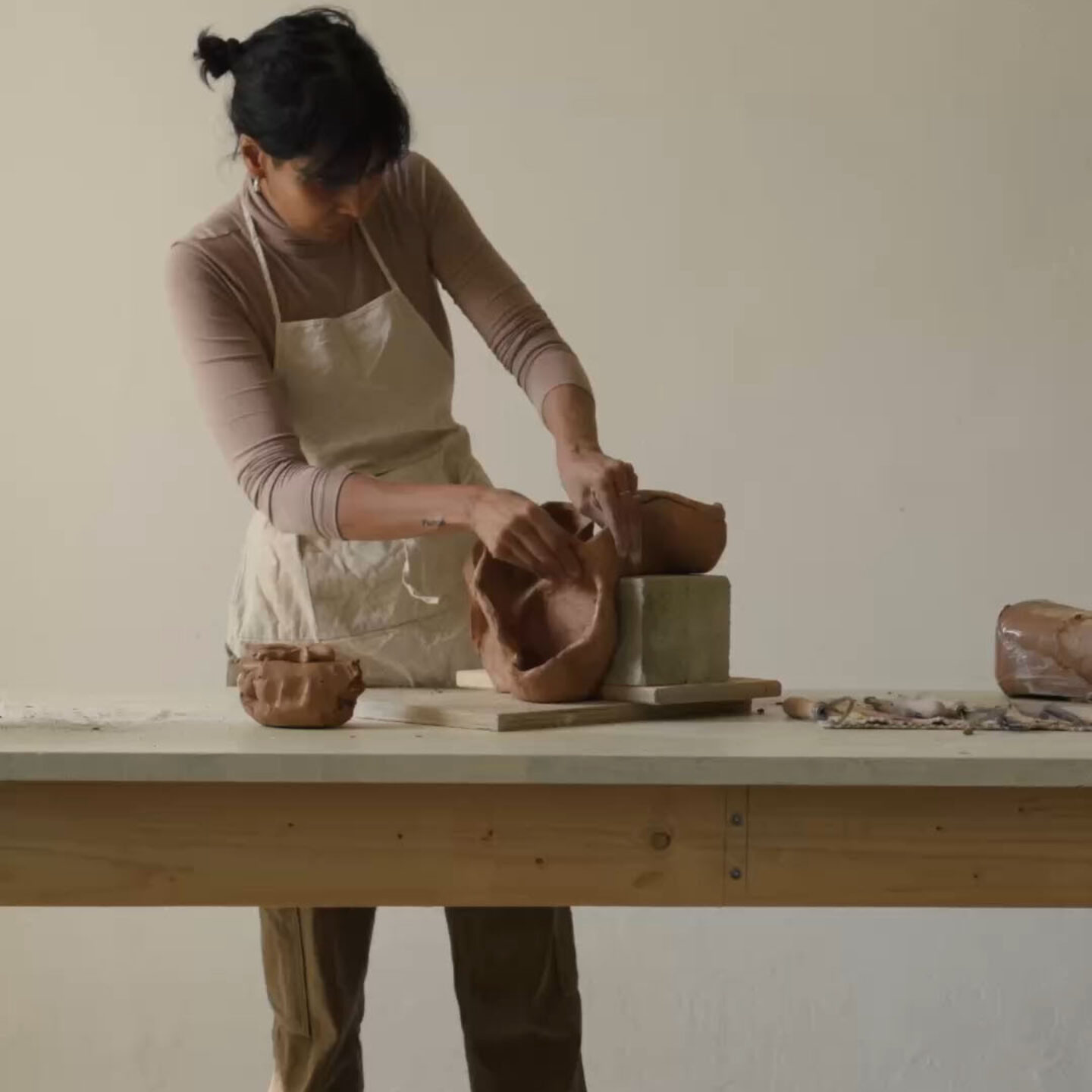
Latika Nehra: Imagining The Future Through Clay
- Name
- Latika Nehra
- Images
- Clemens Poloczek
- Words
- Marie-Louise Schmidlin
Latika Nehra creates objects that invite us into a cosmos where multiple stories intertwine. Shaped through traditional hand-building techniques and inspired by contemplations of tomorrow, her pieces take us on an exploratory journey on which we are allowed to traverse different notions of time. Ignant visited the ceramist in her Berlin studio to learn how she uses clay to navigate the past and the future.
Academically trained as a graphic designer, and after having worked in the field for close to a decade, it was during the pandemic that Nehra first started to explore pottery. “While working as a graphic designer, I always had an additional creative outlet. For a long time, it was painting. Still, when I discovered clay, it was a different experience — I genuinely connected to the craft,” Nehra, now entirely devoted to ceramics, explains as we meet her in her atelier.
Driven by an unwavering curiosity for the material, Nehra develops her pieces by exploring their application forms throughout different epochs. “The first pieces I created were vessels, as these were also among the earliest objects crafted from clay,” she explains. “It’s so beautiful to imagine how objects were designed thousands of years ago—people looked around in nature and translated the shapes they saw into their objects. The first tools, for example, were inspired by animal teeth, and the shapes of ears were reinterpreted as handles of containers,” Nehra tells us, full of appreciation for these primal artifacts.
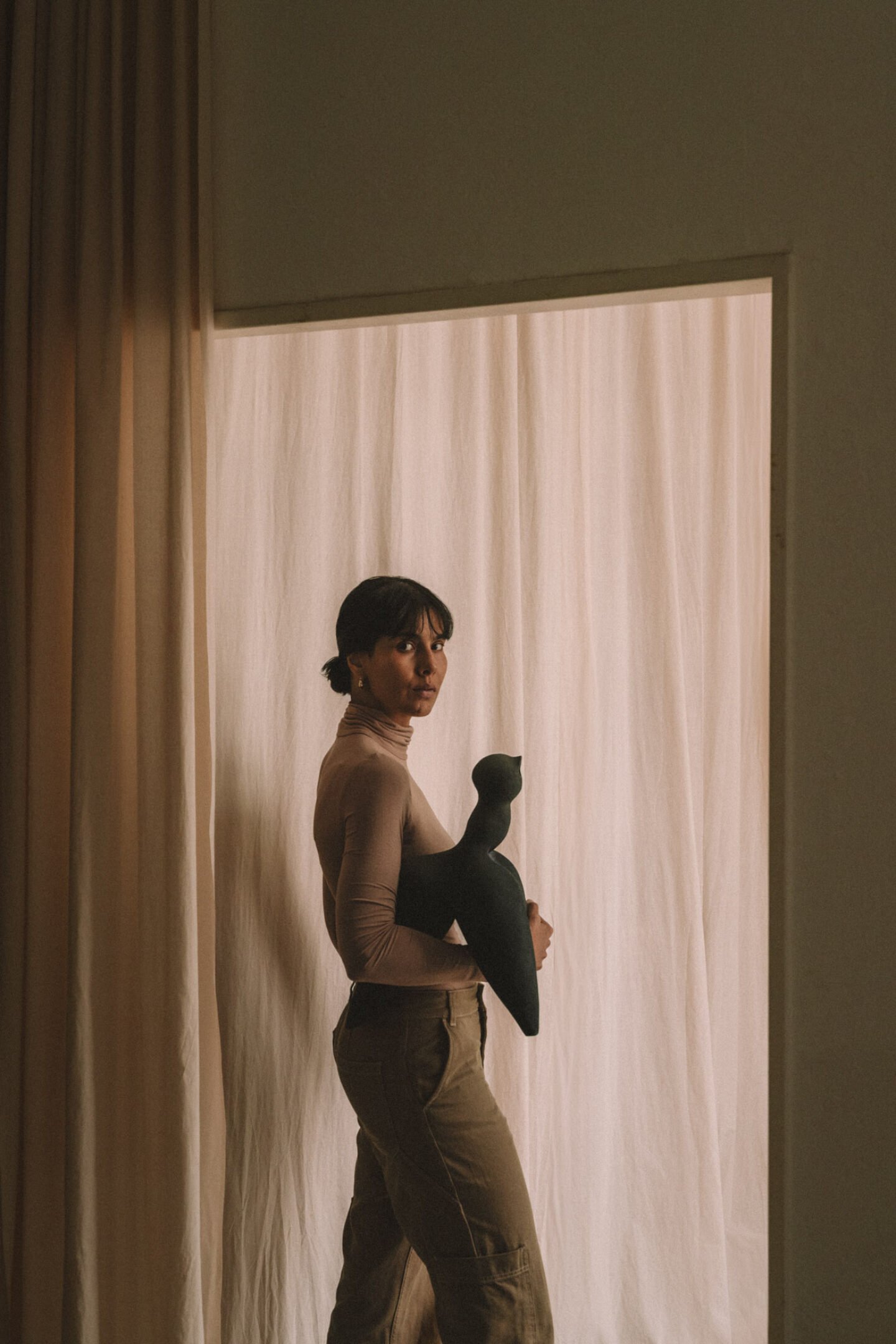
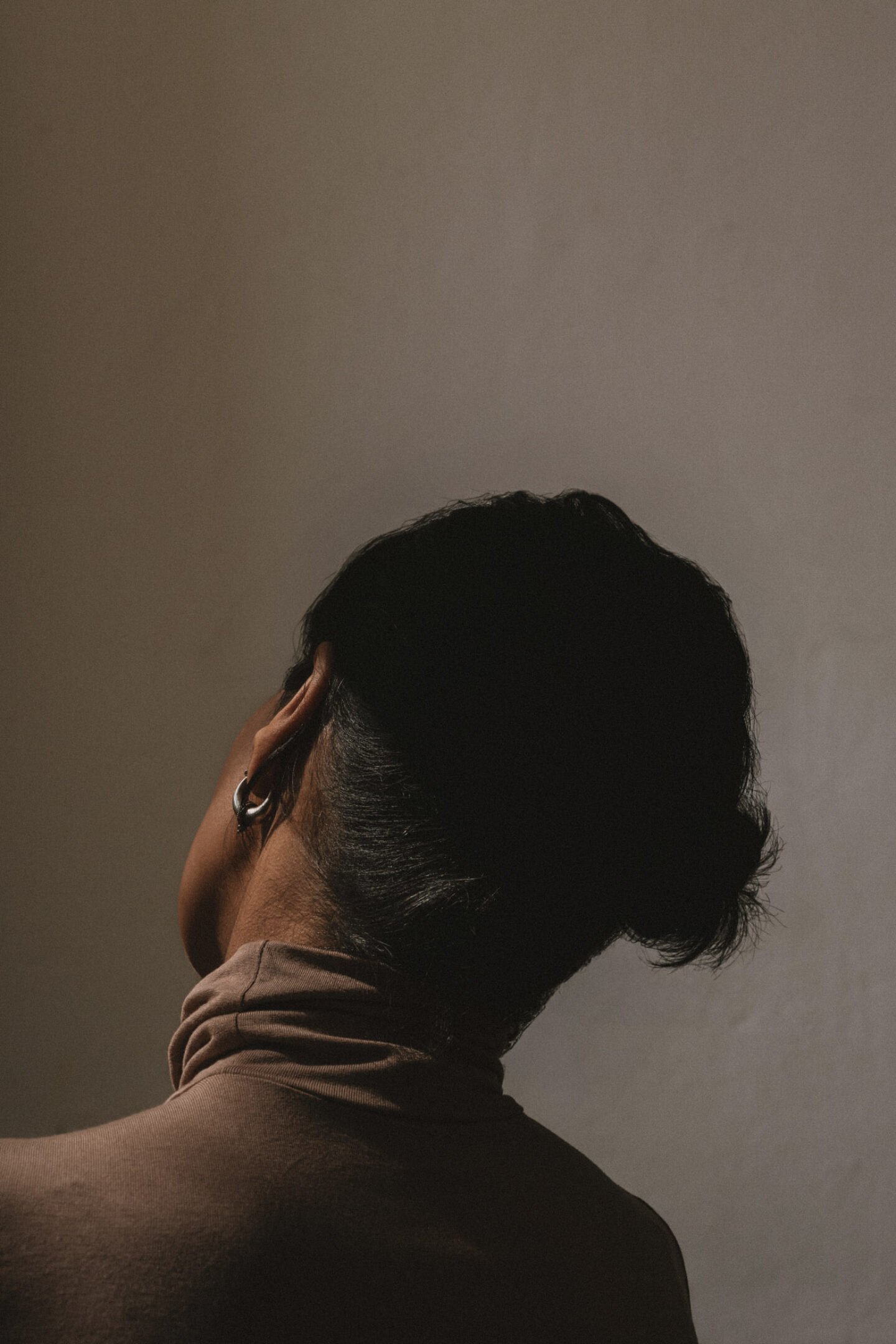
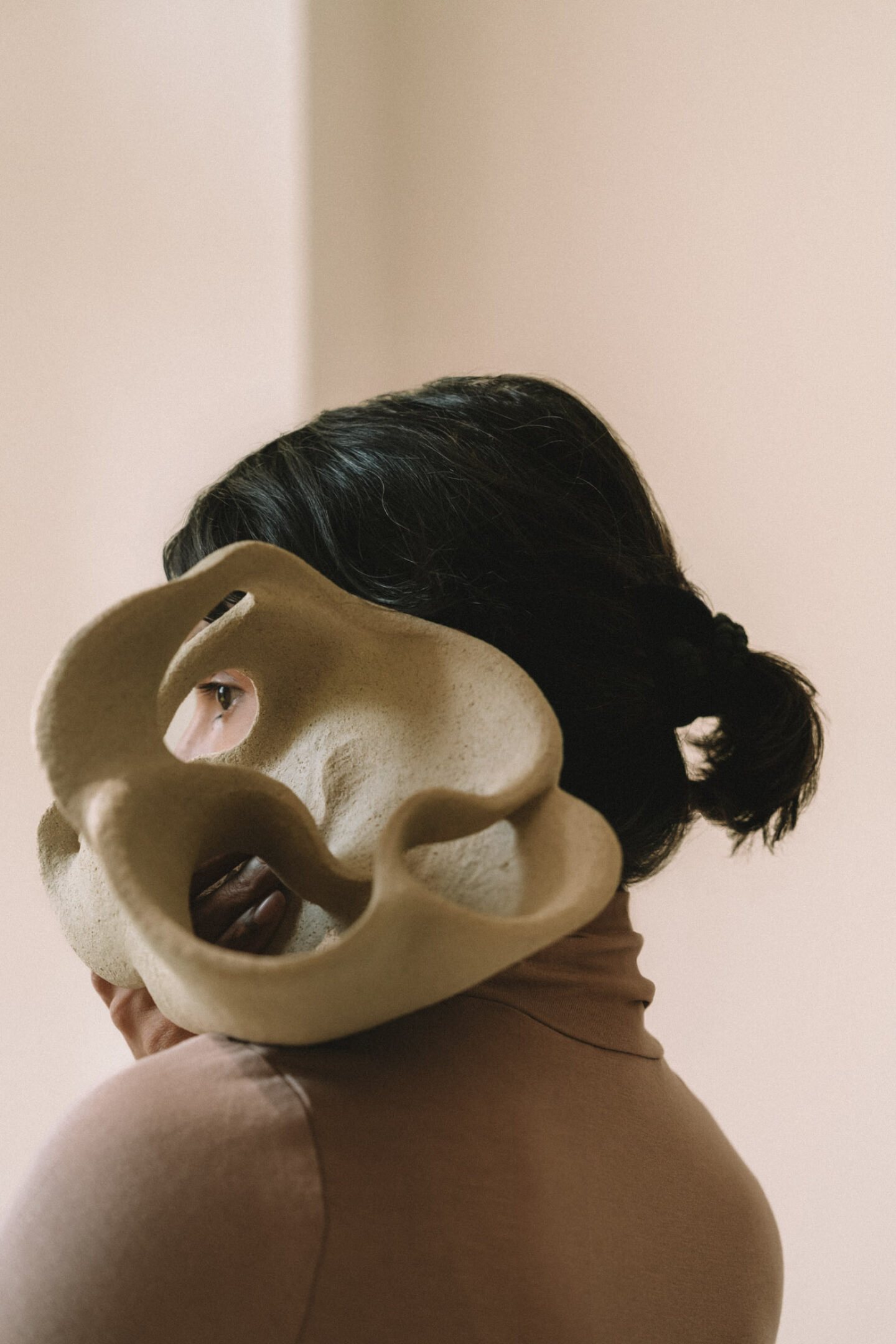
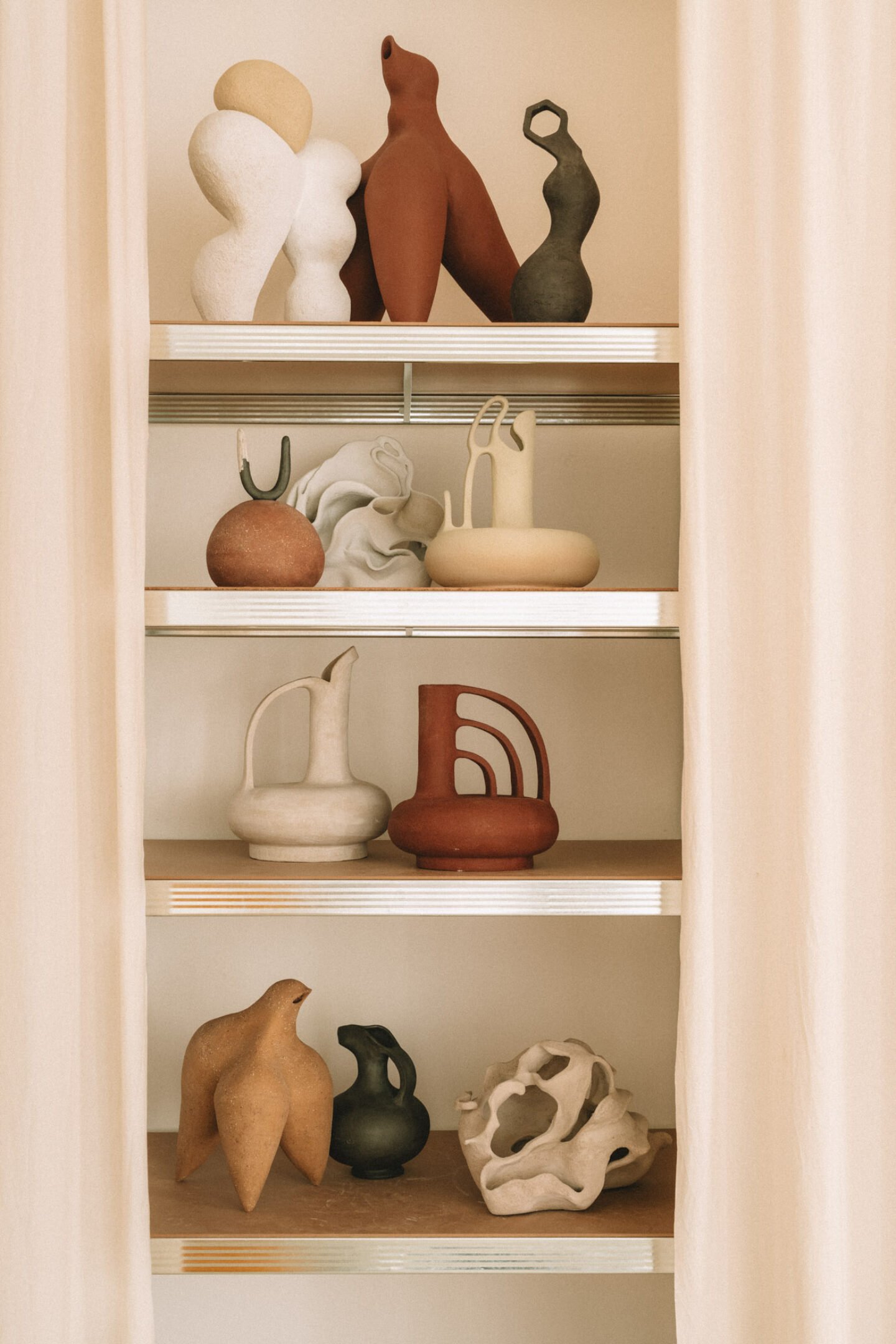
"With my work, I want to pull people away from the screens and invite them to embrace tactility."
Her “Cross-Polination” workgroup builds upon this profound study of prehistoric ceramics. It is a series of vases with a simple base and playful handles reminiscent of plant leaves, twigs, and other smooth, natural shapes. Nehra was inspired to create these objects not only by prehistoric pottery but also by the work of Karl Blossfeldt, a German photographer known for his precise depictions of nature. His almost sculptural plant images influenced the shapes of the vases, adding another layer of storytelling to the pieces.
One of Nehra’s main fascination with clay is its ability to function as a carrier of knowledge. “If you think about it, clay is such a futuristic material. So many things that we know today come from the shards of vessels that are thousands of years old,” the artist tells us with sparkles in her eyes. “That made me think that my work will also live on in future times, and led me to look at ceramics from a different angle,” she reveals.
“With my work, I want to pull people away from the screens and invite them to embrace tactility. In a world where everything is becoming increasingly virtual, the notion of touch gets lost,” Nehra explains. “But I am not averse to what is happening in technology. Quite the contrary, I am very interested, and I firmly believe that one cannot dismiss technological advancements,” she adds. Elaborating on the philosophy that builds the foundation of her work, the artist continues: “In my opinion, one must try to comprehend and look for personal ways of interacting with those technological developments, and this is what I am trying to do with my work. I like this clash of using an ancient material and crafting method but mentally going in this futuristic place.”
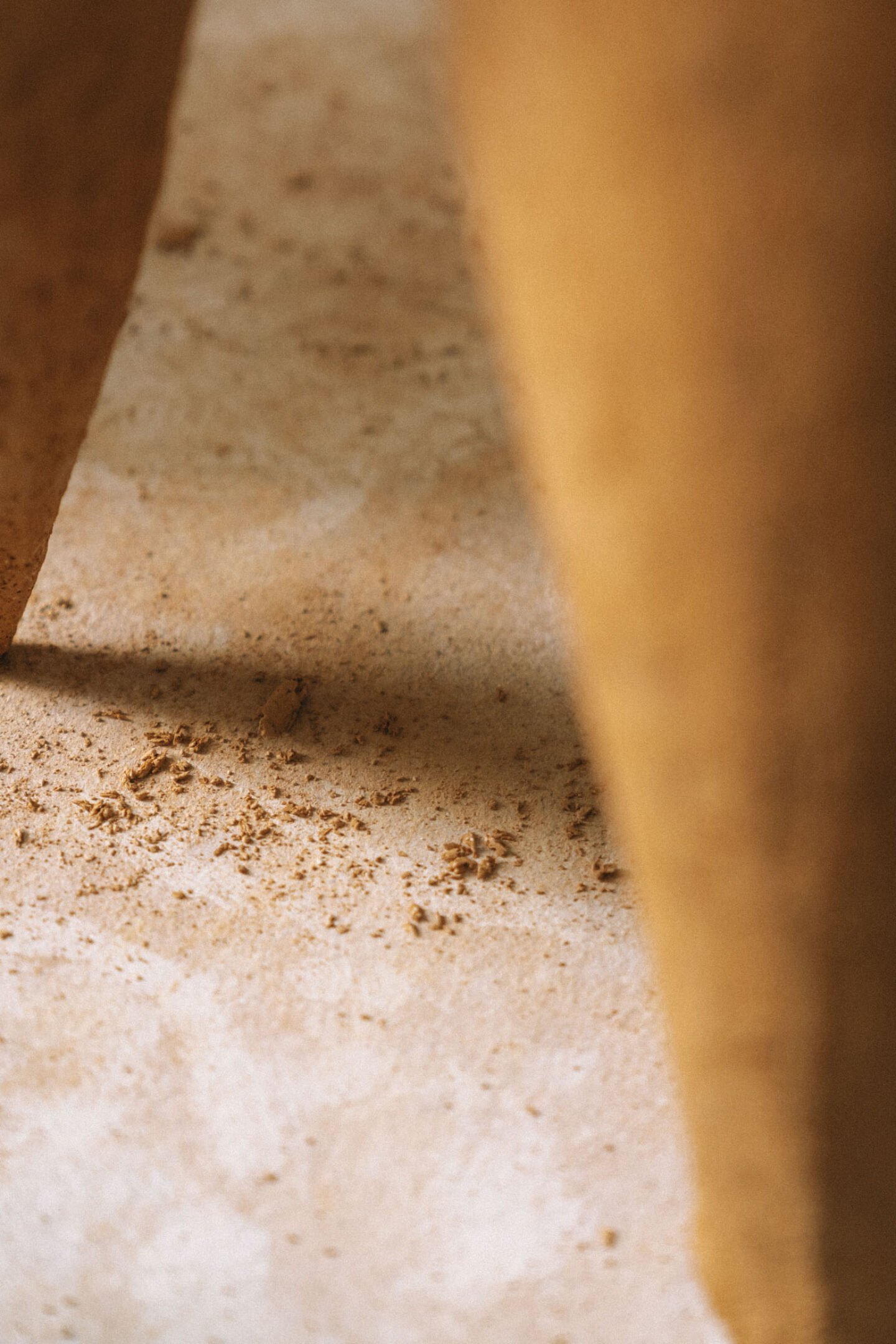
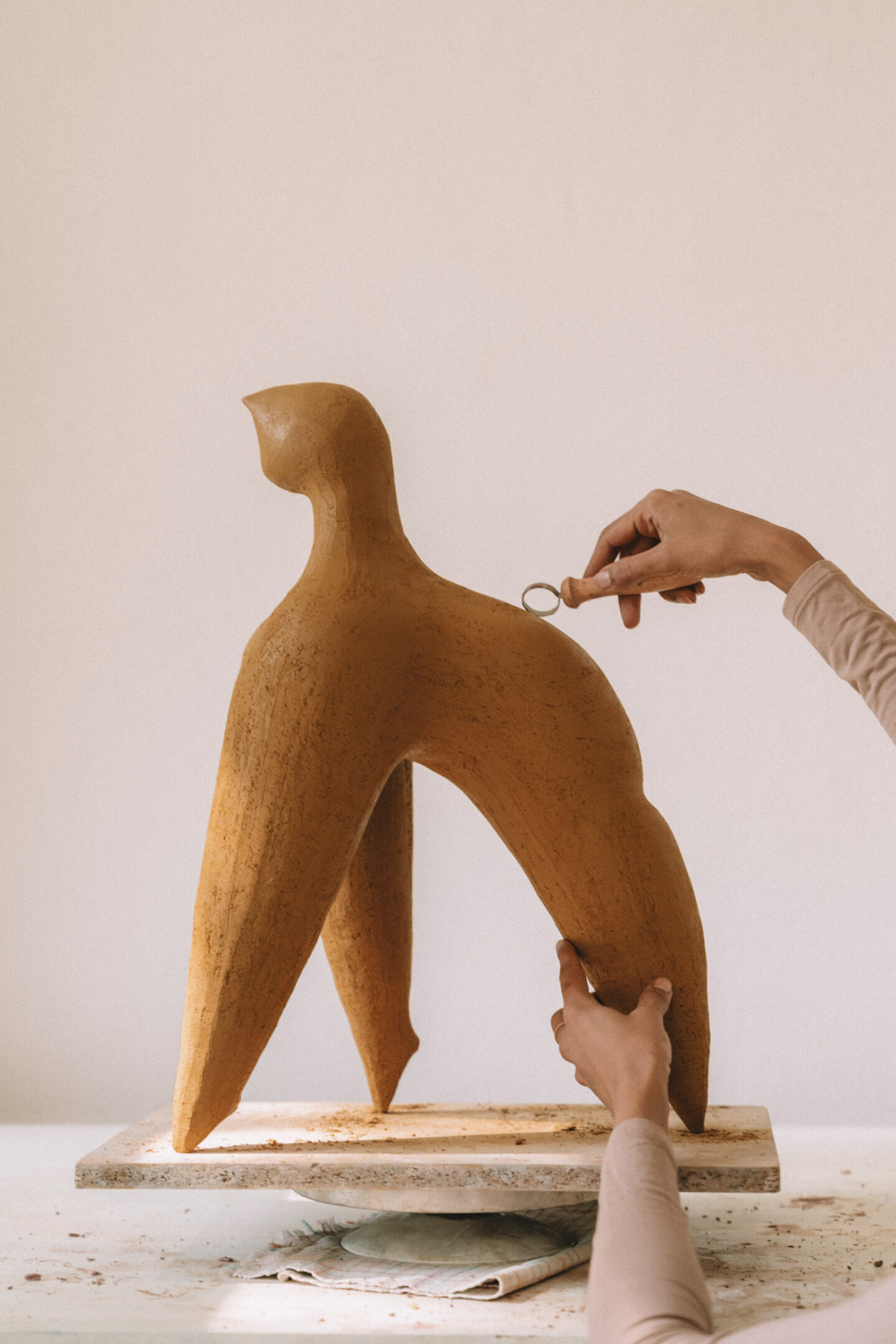
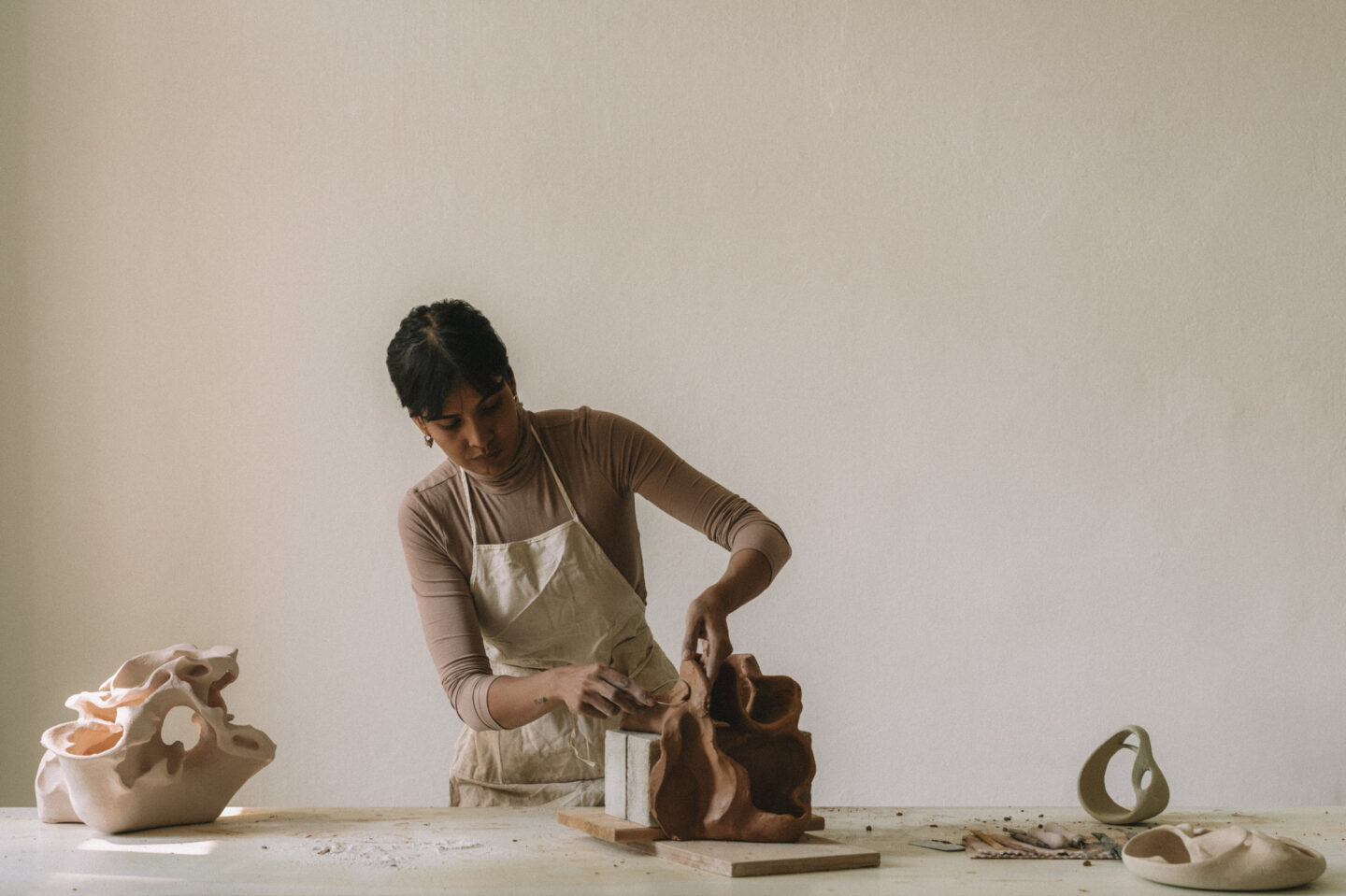
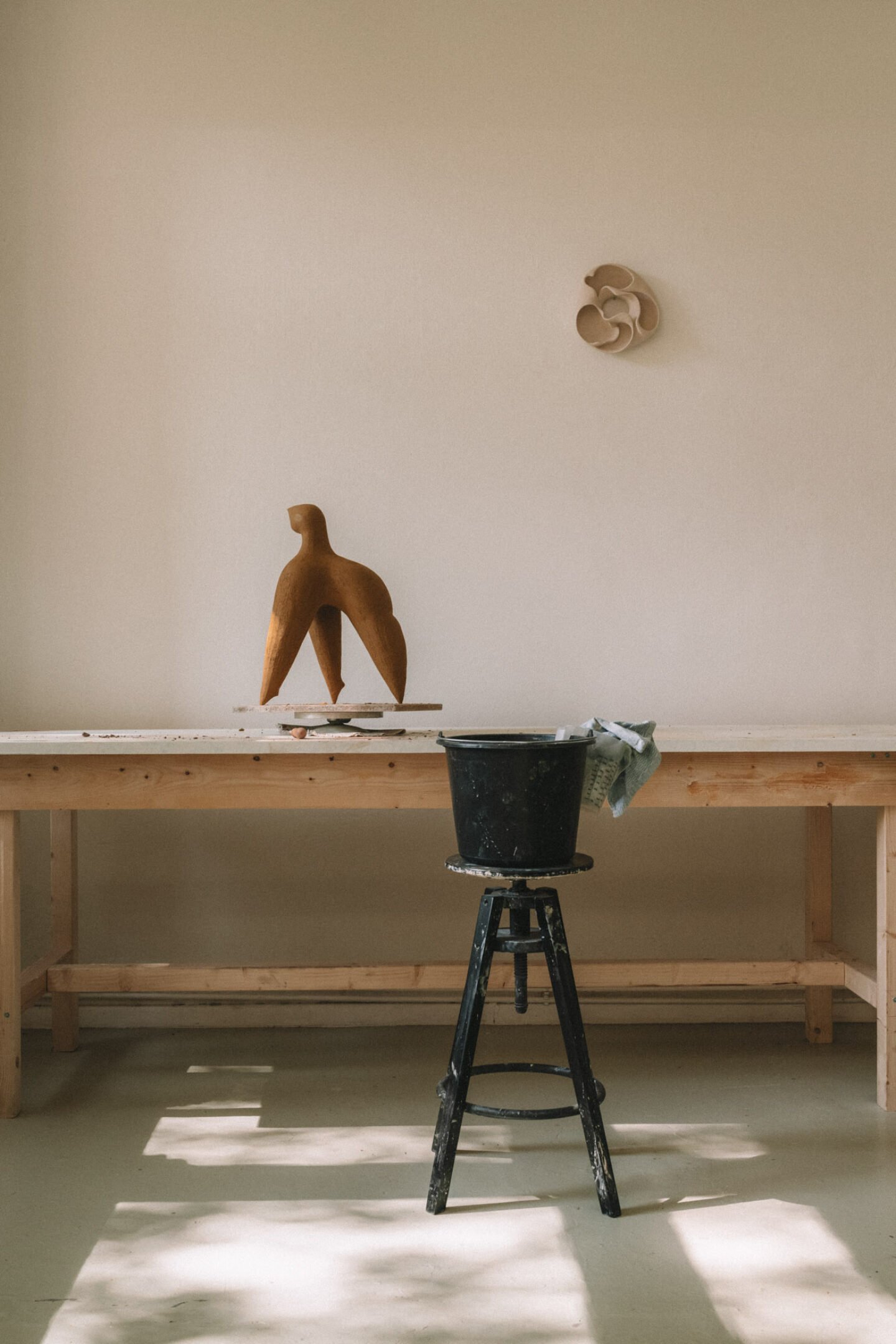
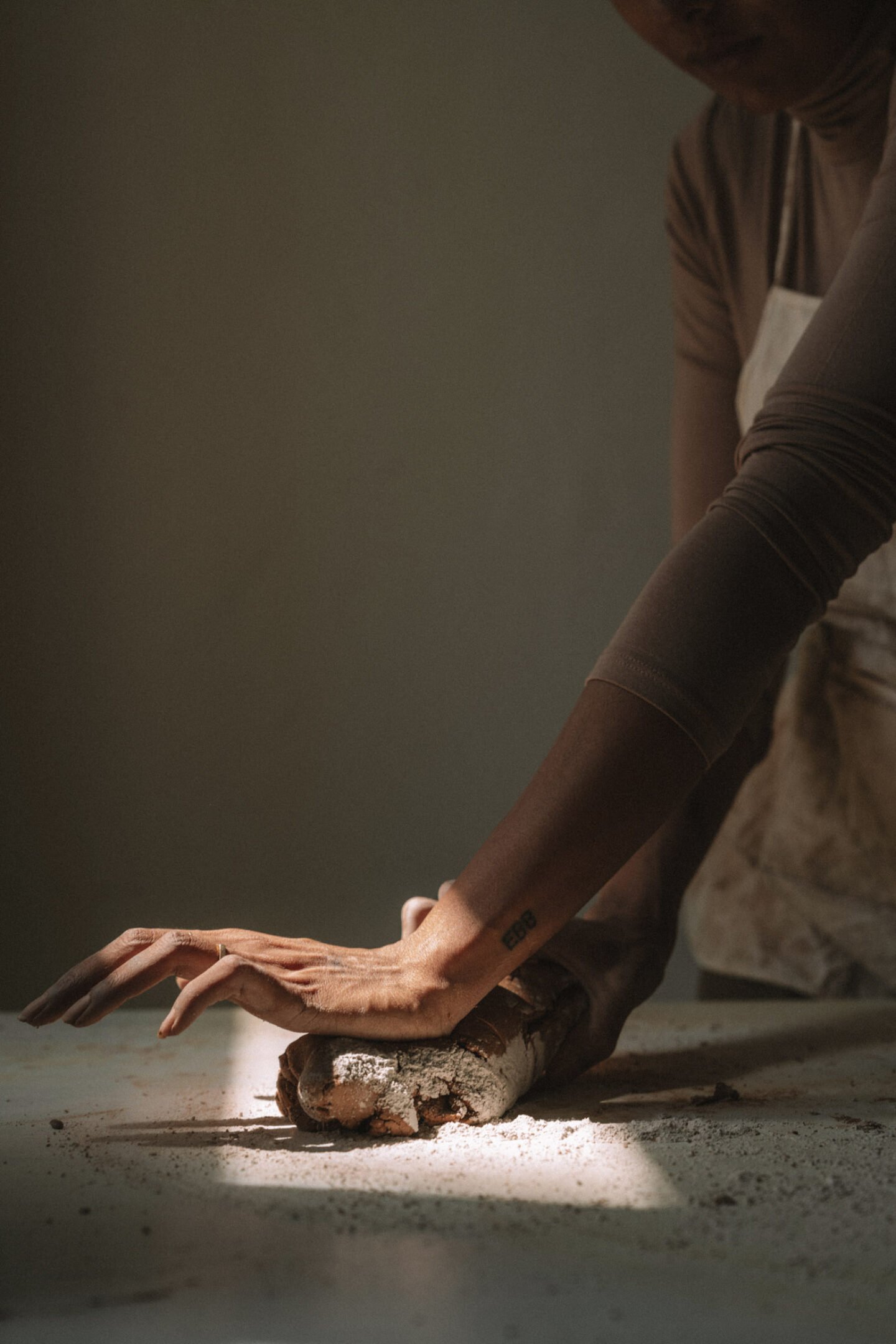
In her series “Post-Anthropocene,” Nehra envisions a world after humans have departed the planet. Here, a herd of three-legged creatures with elongated necks seamlessly transitioning into a mouth-like opening takes center stage. While these somehow eerie beings are reminiscent of the fauna during the Mesozoic era, they also carry a hint of sci-fi, evoking an image of robotic dinosaurs. For her workgroup titled “Fossils & Foliage,” the ceramist sculpted shapes that remind of abstract and petrified landscapes. These objects, twisted and intertwined with each other, seem like testimonials of a scenario in which a whirlwind has passed through a 3D modeling program.
Nehra’s perceptions of the future and technology engage in an intriguing dialogue with the traditional techniques she employs, such as coiling and carving, and the raw aesthetics of her creations. She chooses not to glaze her objects to embrace the inherent beauty and texture of the material. The earthy tones of clay envelop her pieces in a natural color palette of white, beige, ochre, and gray. Different grain sizes add texture to her works.
Born in Jaipur, India, Latika Nehra occasionally returns to her native country to work with local craftspeople. “The process of creation in India is really community-driven,” the artist tells us. “People do have different visions and interpretations of techniques, but they really connect over the material. So eventually, I would like to go there again for a while and explore further methods and ways of working,” she adds.
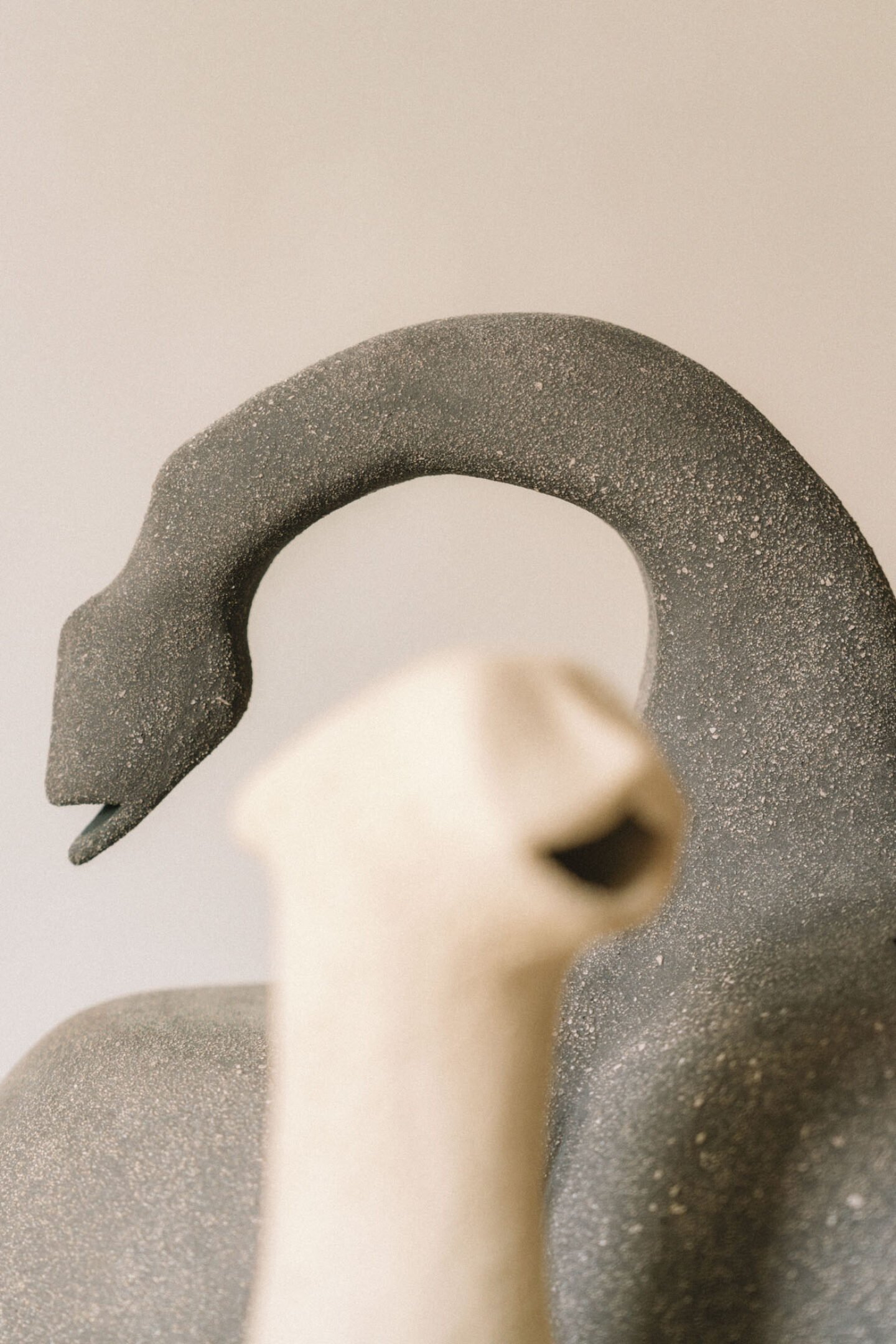
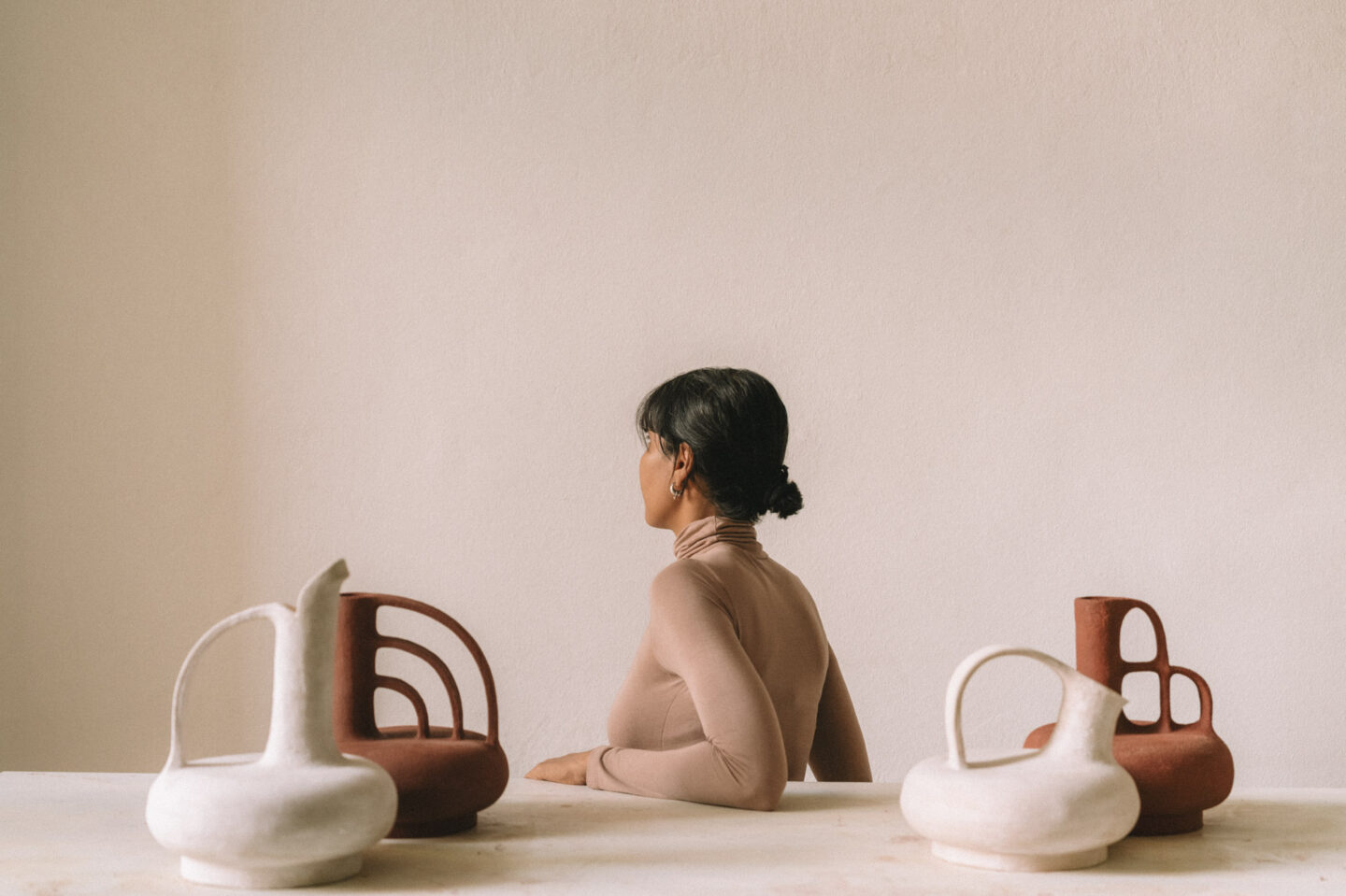
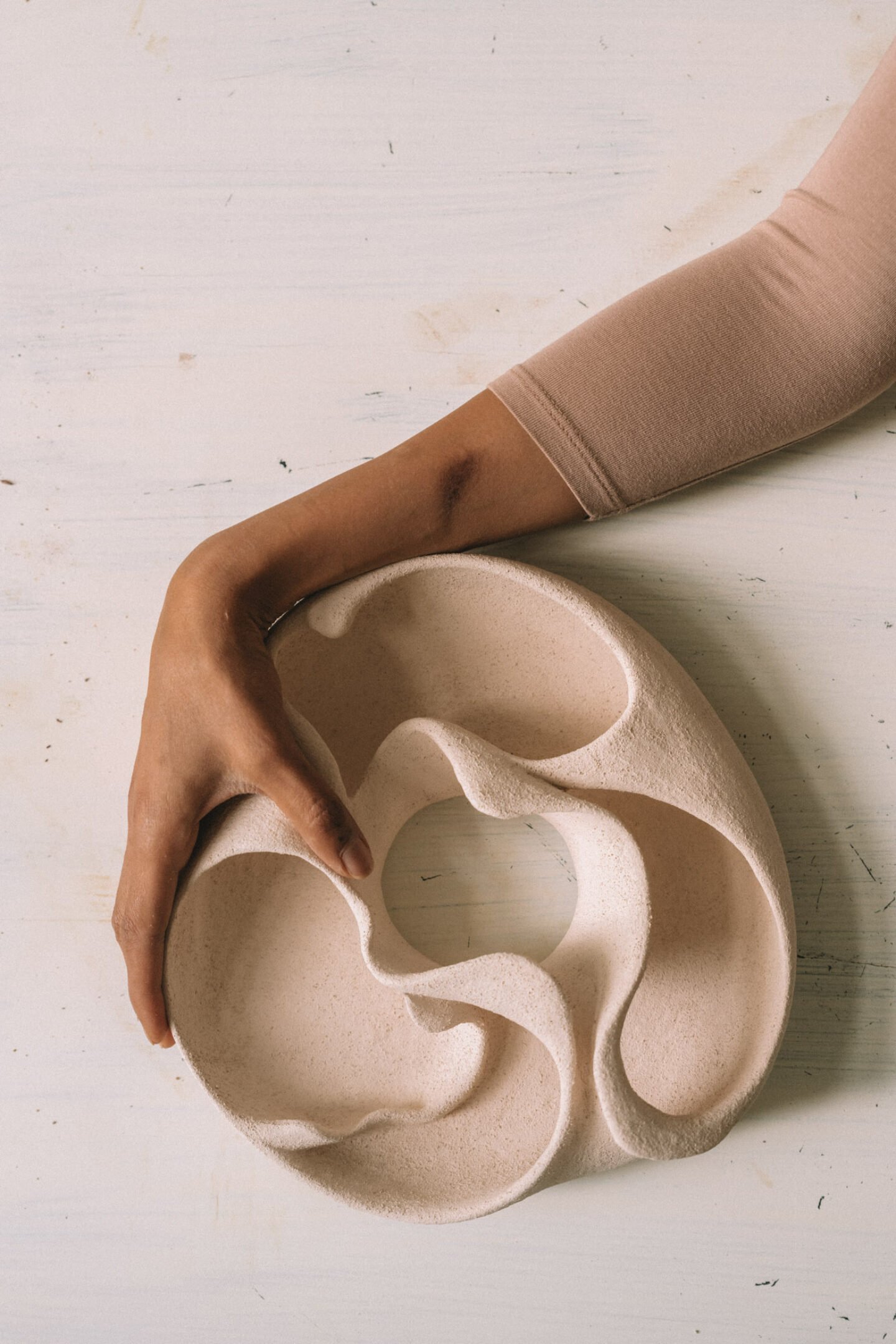
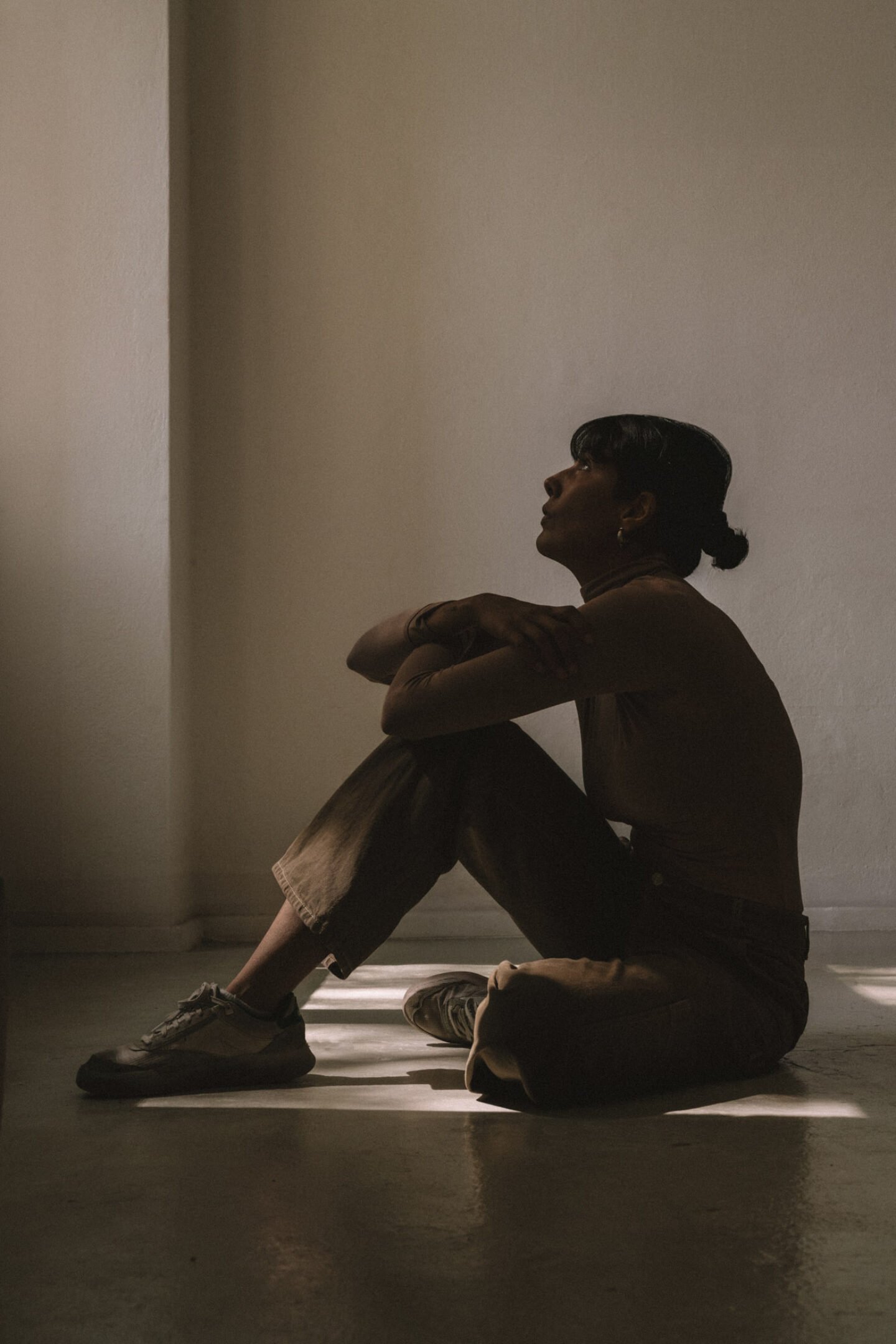
"All I need to start working is a sturdy table, a bucket of water, my headphones, and a bag of clay."
Meanwhile, Nehra’s studio in Berlin is in the heart of Neukölln. Here, a grey industrial floor and white walls set a clean backdrop for creation. Numerous bags of clay are neatly piled up next to a generous working table, and a cascading beige curtain frames the room with its soft folds. “I moved between studios quite a lot recently,” Nehra tells us as we look through the space. “The place where I work greatly impacts the objects I create. Now that I moved to a bigger studio, for example, I observe that my work is also growing in size.”
However, Nehra prefers to keep things simple when it comes to creating. “All I need to start working is a sturdy table, a bucket of water, my headphones, and a bag of clay,” she tells us, revealing how little she needs to create her universe where time flows in all directions.
Images © Clemens Poloczek | Text: Marie-Louise Schmidlin
